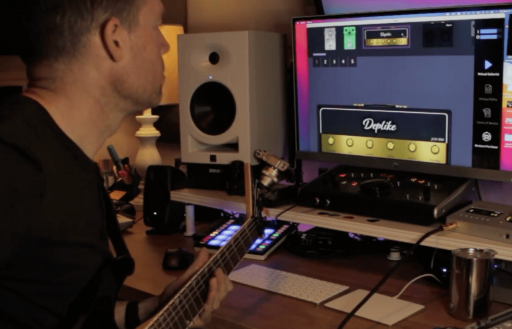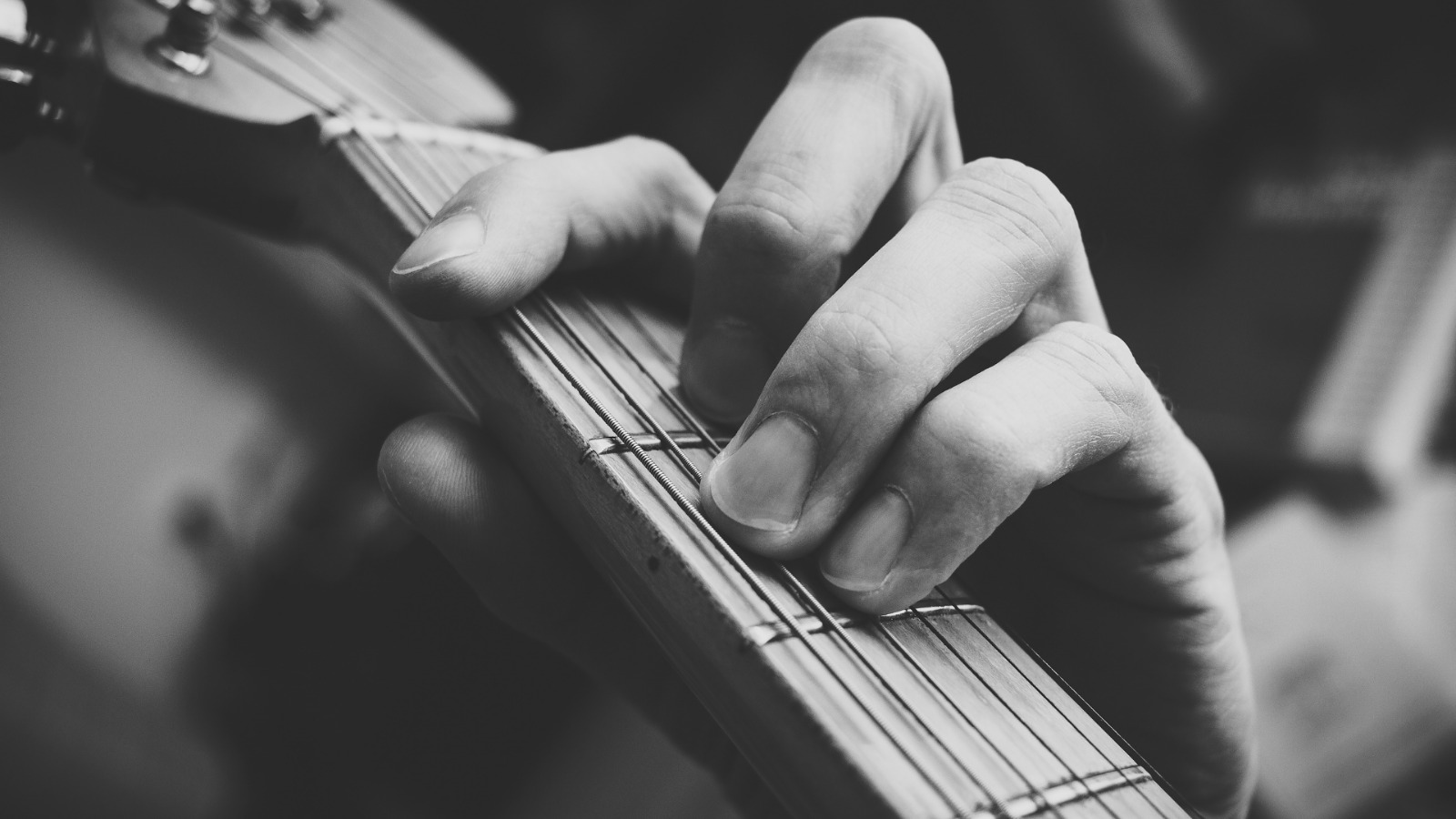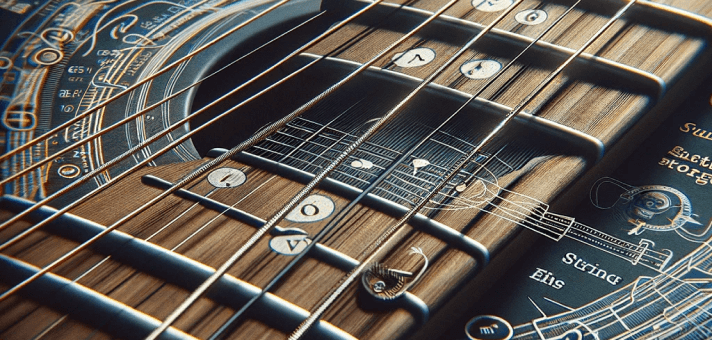How To Make a Chord Progression More Interesting?
Although songwriting formulas can get you in trouble, they are also very tempting to use once you’ve got them. They can make all your songs sound the same, but they can also stunt creativity. One of the most important things that writers should avoid is worrying about predictability when it comes to chord progression.
Although predictability is fine with most chord structures, it shouldn’t be excessive. Most listeners don’t notice the difference between two chord progressions if the underlying rhythm and instrumentation are different.
There are times when you want to make your chord progressions more interesting. However, most writers are scared of playing around with chord progressions just in case they can ruin it.
Try these ideas for creating more interesting chord progressions without actually changing the roots of the chord. These are subtle changes that can make your progression more interesting.
The first thing that comes to mind when people think about music is that it’s simple. However, as the various possibilities within it start to emerge, the question becomes more complex.
In order to make sense of the various possibilities, let’s make some assumptions. For instance, I assume that you’re writing your chord progressions.
How To Make a Chord Progression 1. Spicing Up
Let’s start with an easy chord progression like: D – C – Am – G.
One of the first things you might want to try is adding some spice to your progression by adding some 7ths or suspensions to the chords. Doing so by lifting your third finger from the second fret will allow you to change the Am chord to Am7.
Adding a sus4 to the D chord will allow you to transition from the G chord to the C chord. It’s a nice lead into the next chord. To find out where each of these chords have a sus4, listen to the notes that lead into the next chord.
Some musicians might add other tensions to the dominant chord, known as altered tensions. These are b9 and 9 and are commonly played to create even more tension. Most of the time, however, these are only played if the chord symbol states that they want to do so.
2. Switch Up the Bass
Most people forget about the bassist unless they’re a good enough player to be in a band. In the same way, they forget about the importance of the bass notes when it comes to chord progressions. By changing the bass notes, you can create a whole new feeling in the chord progression without affecting the actual chords.
For instance, if you want to create a new feeling in a chord progression, instead of playing the root notes, you can play the bass notes as the main part. Doing so will add a little flavor to the song and keep the chord progression intact.
3. Use a New Tuning
If you’re a beginner and haven’t tried out alternate tunings, you need to get started. It’s fun, and it adds a new dimension to your playing.
One of my favourite chord progressions is D A D F# A D, an open strum. If you’re new to this playing style, it can take a while to figure out how to play it. If you prefer, you can start with a drop D or a drop Ds. These two variations allow you to play the key of D in different ways. For instance, if you’re playing the same chord with C-Am-Em-G, then you can drop D in the key of D to play the progression.
How To Make a Chord Progression 4. Suspensions
The addition of suspensions can help release tension and allow a song to flow. They can also convey a sense of resolve.
A suspended chord can be created by replacing the 3rd chord in a chord with either a major 2nd or a perfect 4th. The most common technique is to resolve from a Csus4 chord to its major counterpart.
A dominant 7th chord can also be created with a suspended 4th. This chord is very popular and can be used in various ways, such as in aii – v – I chord. The 10th is also available on a 7sus4 chord.
The 7sus4 chord in “Maiden Voyage” by Herbie Hancock is a great example of this technique. The progression is as follows: D7sus4, F7sus4, E7sus4, and Dbm9.
The use of 7sus4 chords can convey a sense of wonderment and an unknown destination.
5. Replace Time Signatures
Western pop songs are usually in the 4/4-time signature. This is a great signifier for many great songs, but it also produces a lot of monotonous chord progressions.
Changing the time signature is not always about replacing the chords. It can also help improve the rhythm of your song. For instance, if your song doesn’t work, try playing it in a 3/4 signature.
If you’re a musician who enjoys creating unique chord progressions, try writing a song in 5/4, 7/4, or 8/4. Doing so can be very challenging, but it’s also very rewarding to see how well it works.
6. Invert Chords
If you’re a guitarist, you probably already know what it means to transform a chord. Doing so involves playing the notes of a different chord in its non-traditional places. For instance, a natural C major chord has the C-E-G notes played in an ascending order. You can do this by playing the chord notes in various places on your instrument. Doing so will give the chord a completely new sound while keeping its notes intact. Inversions are also a great way to practice.
How To Make a Chord Progression 7. Different Chord Voicings
One of the easiest ways to make a chord progression sound different is to play it in different positions. This is also a great way to find a place to live in a group. If you’re playing with a group, then playing in different places can help you find a place to belong.
In our original chord progression, we start with the bar chords D – C – Am – G. Then, we can add the sevenths and suspensions to the same chord. This variation on the chord shows us how to do a different take on the same progression. The C-Am7 chord starts with the D, G, and B strings; all fretted on the 5th fret.
If you are an electric guitarist and you are in a band with a keyboardist and an acoustic guitar player, then moving up the neck might help create some separation. Doing the highest three or four stings will give you all of the chord components.
8. Modal Mixture Chords
A modal mixture is used if your song is in a major key or a minor key. For instance, if your song is in C minor, Ddim would be the chord based on Fm, while F in C minor is Fm. You can then subtly alter the progression of the song by changing its chord.
9. Modulation
There are various techniques that can be used to change the key during a song. In this tutorial, I will cover three different types of modulation: direct, pivot, and transition.
Direct modulation is the most powerful technique when it comes to changing the key. Unlike other types of modulation, which use common chords to smooth the transition, direct changes the key directly.
In Michael Jackson’s Man In The Mirror, the gospel choir sings the word “Change” after the third chorus. The song then transitions to a semi-tone up with the new key of G# Major.
This technique works best when you are trying to change the key to a neighbor chord, which is a key that’s no more than a couple of notes away from the original key. There are many possibilities with this technique, and it’s a great way to experiment with different keys.
Unlike other modulation types, the transition is much more complex and involves a symmetrical motion. This method can be performed by using a chord progression that’s symmetrically spaced.
If you’re trying to make your listeners feel like they’re being asked to guess where the key is going next, a transition is a great technique to use. It can also keep them guessing.
How To Make a Chord Progression 10. Change the Way You Play
Try using palm muting to add a different color to your sound. Aside from being able to pull the notes out of the guitar, palm muting can also add a different tone to your sound. This technique can be used to create an aggressive sound or pull the guitar down in the mix. Another technique that can be used to add to the progression is the use of arpeggios. This allows you to add a certain amount of color to the song by throwing in suspended notes.
11. Try Different Tones
Depending on the equipment you have, try varying the volume during a song to get the most out of it. For instance, if you’re a guitar player, try pulling back the volume during a verse to get the most out of it.
If you have the option, try switching to a neck pickup instead of a bridge pickup. This will give you a different sound.
Try different effects for different sections of the song. If that sounds good to you, then go ahead and try it. However, be aware that it might be too much for each chord.
A delay is a fun way to create a new rhythmic pattern that’s machine-like in its accuracy. One of the most popular examples is U2’s “The Edge.” Aside from giving you a new sound, it can also help maintain a very accurate tempo.
12. Arrangement
This works best when there are other musicians playing off of each other. However, it can also work differently depending on the number of musicians in the band. For instance, if there are multiple instruments in a power trio, then this technique might work well, but it might not be noticed in a larger group.
Years ago, I wrote a song where the guitar was quiet for the first measure; then, it would play a melodic line for the rest of the measure. Likewise, on the second measure, the bass would also play a melodic line. Finally, on the fourth measure, the bass and guitar played together. This can create a bit of interest in the chord progression, as only two chords can be use in the song.
The other musicians can find their own voice without being in front of it all the time. This technique can also work well for songs that feature multiple instruments.
How To Make a Chord Progression 13. Rhythm
Changing the rhythm will give the chord progression a different feel. Doing so will allow you to hold each note for the full count or go for a big, lush open chord. There are so many possibilities with this technique. You can also make different patterns for each chord and slow it down or speed it up depending on the situation.
14. Dynamics
The way that we play music doesn’t always reflect the notes that we play. For instance, if you play a chord progression hard, then pull back and play it slowly.
When listening to the singer, try to keep an eye on the part of the song they are singing and wait for the space between them and the rest of the song to get louder. Doing so will allow you to focus on the part they are singing.
Conclusion
Even if you’re not a great guitarist, there are plenty of chord progressions that are available to you. These tips will help you improve your skills and ease any stress you may have.
Try these chord progressions in different ways. You can also change the dynamics and count while playing the chord. Doing so will allow you to create a more interesting and challenging chord.
Try something new. Doing so will allow you to stretch yourself and improve your skills. Doing so will also allow you to develop new tools.
Writing songs is fun, so don’t get too bogged down in theory. Instead, try some of these tips and tricks to find the perfect sound for your song.
Now, how to get the guitar tone you want?
Improving your guitar playing skills requires constant work on two main items: 1. Shaping the tone with your fingers; 2. Tweaking the guitar effects and amps to shape your guitar sound.
We all want to sound like our idol, right?
Getting the guitar sound of your favorite guitarists/band can be very costly and frustrating. It can require years of expertise to achieve your desired guitar tone.
Don’t worry, you don’t actually have to break the bank and spend years to get that sound.
Deplike Guitar FX Amp Sim suite plug-in got you covered on all Windows, macOS, iOS and Android devices. All you have to do is plug your guitar and play!





